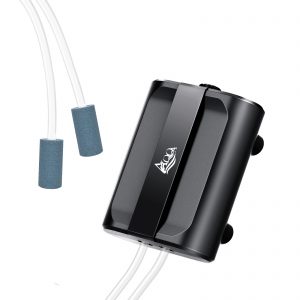In the world of fish enthusiasts, the aquarium filter is not only a crucial device for cleaning water quality but also an important tool for maintaining fish health and happiness. An efficient and suitable filter can not only effectively remove impurities and harmful substances in the water but also promote the circulation of oxygen in the water, providing an ideal living environment for aquatic organisms. This article will introduce in detail how to choose and maintain the right aquarium filter for you.
1. Understanding the Types of Aquarium Filters
Aquarium filters are mainly divided into the following types, each with its unique advantages and application scenarios:
- Internal Filters: Suitable for small aquariums, easy to install and relatively quiet, but with limited filtering capacity.
- Hang-on-Back Filters (HOBs): Suitable for medium-sized aquariums, easy to install and maintain, with good filtering effects, making them a favorite among many fish enthusiasts.
- Canister Filters: Suitable for large aquariums, with strong filtering capabilities and providing more comprehensive filtering effects, but with relatively complex installation and maintenance.
- Drip Filters: Suitable for aquariums requiring efficient oxygenation, using gravity to make water slowly flow through the filter media, increasing dissolved oxygen content.
2. Choosing the Right Filter Size
When selecting a filter, size is crucial. Generally, the flow rate of the filter should be at least 2-3 times the capacity of the aquarium’s water volume. For example, for a 100-liter aquarium, an ideal filter flow rate should be between 200-300 liters per hour. This ensures effective water purification while avoiding filter overload.
3. Considering Filter Media and Functions
Different filter media have different purification effects on water quality. Common filter media include activated carbon, sponges, ceramic rings, etc. Activated carbon can adsorb odors and pigments in the water, sponges can effectively intercept large particle impurities, while ceramic rings and other biological filter media help cultivate beneficial bacteria to decompose harmful substances. According to the needs of your aquarium, choose the appropriate combination of filter media to achieve the best filtering effect.
4. Maintenance and Care
Regular maintenance and care of the filter are key to ensuring its long-term stable operation. Here are some maintenance suggestions:
- Regular Cleaning: Depending on the frequency of use and water quality, regularly clean the sponges and filter media of the filter. Avoid using cleaning agents containing chemicals to prevent contamination of the water quality.
- Replacing Filter Media: Consumable filter media such as activated carbon need to be replaced regularly, generally recommended every 3-6 months, to ensure its adsorption capacity.
- Checking Motors and Seals: Ensure that the filter motor operates normally and there is no water leakage at the seals. If abnormalities are found, repair or replace them promptly.
- Regular Disinfection: For complex structures such as canister filters, regular disinfection treatment can be carried out to kill potentially harmful bacteria and parasites.
5. Precautions
- When installing the filter, ensure that the power socket is safe and easily accessible to prevent accidents.
- Avoid over-cleaning or frequently changing filter media to prevent disrupting the balance of beneficial bacteria in the filtering system.
- For newly purchased filters, clean and soak them before use to remove any potential harmful substances.
In summary, choosing and maintaining a suitable filter for your aquarium is crucial for ensuring clean water quality and fish health. By understanding the different types of filters, selecting the appropriate size and filter media, and regularly maintaining and caring for the filter, you can provide a healthy and comfortable living environment for your aquatic creatures. I hope this article can provide useful guidance for your aquarium management!








Leave a reply
You must be logged in to post a comment.